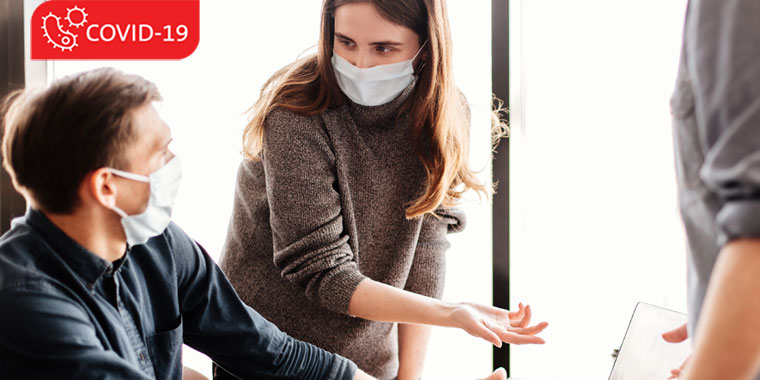Easing the Stress Of Returning To Work Amid COVID-19

Find Your Perfect Match
Answer a few questions and we'll provide you with a list of primary care providers that best fit your needs.
As businesses and other organizations resume operations in the wake of COVID-19, they’re welcoming back and reintegrating their workforces. Some employees are reentering their workplaces after working at home. Some are returning from furlough. And others, in roles deemed essential, never left.
These varying experiences, converging as the pandemic continues, have the potential for stirring up anxiety and tension. So, how can you, as a manager or employee, help make the return to work less stressful?
Greg Kelly, an employee assistance program (EAP) counselor with EmployeeCare of Premier Community Health, offers Premier Health Now a few words of advice for smoothing the transition.
Understand: Everyone Reacts Differently To the Situation
Kelly says, “I’ve had clients who are fairly introverted and have really not been impacted by the COVID situation almost at all. They like to be at home. They’re working remotely. Their paycheck is coming in. Kind of not a care in the world,” he says with a chuckle.
“Then contrast that with other employees who have lost finances, maybe had a loved one sick or concerned about a loved one or themselves becoming ill.
“They’re very social people who see that everything really changed. They can’t go to their house of worship. Can’t go to a movie or a concert. Perhaps they just had an anniversary and couldn’t take their wife or husband out for a meal.
“They’re just feeling like their world has been totally turned upside down.”
He adds, “In the workplace, when everyone is back, you may have a team composed of both of those extremes. And they’re obviously going to react to the stress of that differently. And that can be a challenge.”
Be There For Others
Kelly says, “It’s important that we’re available to team members, as team managers, supervisors, mentors, and more seasoned colleagues, to encourage people to watch out for each other.”
He suggests looking for behavioral cues that could indicate that a team member “might need a little more support, maybe even on a professional level, like counseling or EAP.”
Cues to look for include:
- Changes in attitude and personality. Perhaps, a usually social co-worker who seems withdrawn or uncharacteristically has difficulty cooperating with others.
- Changes in appearance. “I’ve seen people that during this pandemic look a little more disheveled. They just don’t look quite as sharp as they used to,” Kelly says.
- Decreased productivity
Anxious? You’re Not Alone
“So many people I talk to have dealt with anxiety on and off throughout their lives, but say it’s pretty manageable.
“But during the COVID crisis, people who might normally be a 3 or 4 or 5 on a scale of 1 to 10, are saying, ‘I feel like I’m at a 9, maybe 10, all the time. Stuff I normally do to bring it down doesn’t seem to be working. What’s wrong with me? Why am I so anxious all the time?’”
They need someone to listen and reassurance that they’re not alone. It may help them to know that you may be feeling more anxious than usual, too.
“Personally, I’m almost tired of hearing, ‘We’re all in this together,’ but there is a lot of truth in that,” Kelly says. “There is something comforting for some people in knowing that they are not alone.”
Tips For the Workplace
Kelly recommends the following to help you and your fellow team members get back in sync as you get back to work:
Communication. “Providing regular communication and feedback is going to be important,” Kelly says. This includes informing the team about procedures and precautions established “to protect everyone and still do our job.” Also, he says, it doesn’t hurt to hear things like, “’Glad to have you back, Bob. We really missed you around here.’ Anything to be encouraging can be helpful.”
Regular team meetings are a key to maintaining the flow of communication, including opportunities for team members to share their observations, ideas, and concerns.
Reintroduce team building exercises. This doesn’t have to take a lot of time, Kelly says, but can help everyone bet back in sync and return to feeling like they’re part of the same team.
Stress management. Kelly recommends encouraging team members to call on their support systems, such as family, friends, mentors, or other trusted advisors, to help them manage stress.
Finding constructive outlets outside work is also key to managing stress. “What do you do after work to help you refocus, recharge, feel good, unwind? A lot of people struggle with that.”
And Kelly advises checking with your employer about available resources, such as an employee assistance program, for helping you manage problems such as stress and anxiety.
Find Your Perfect Match
Answer a few questions and we'll provide you with a list of primary care providers that best fit your needs.
Source: Greg Kelly, employee assistance program counselor with EmployeeCare of Premier Community Health





